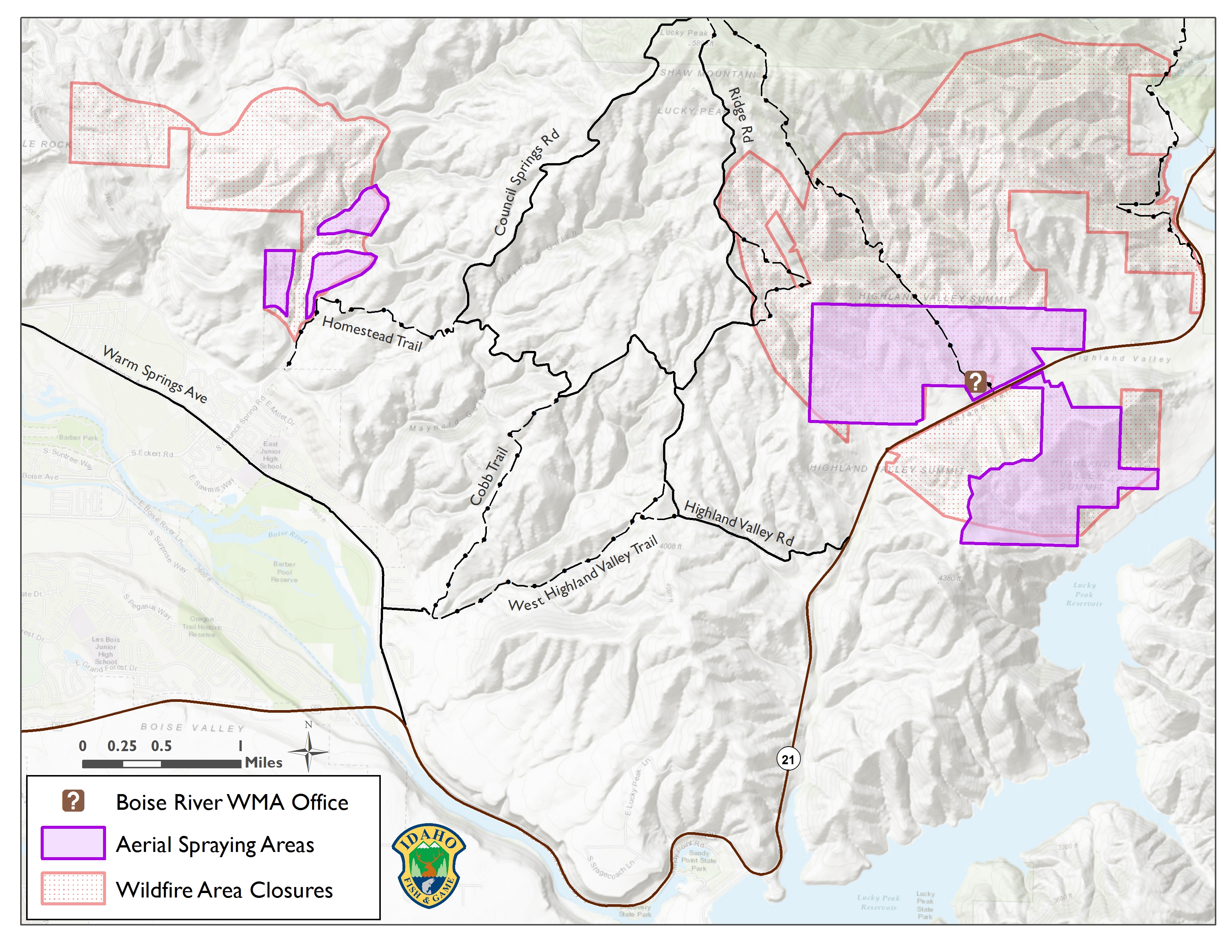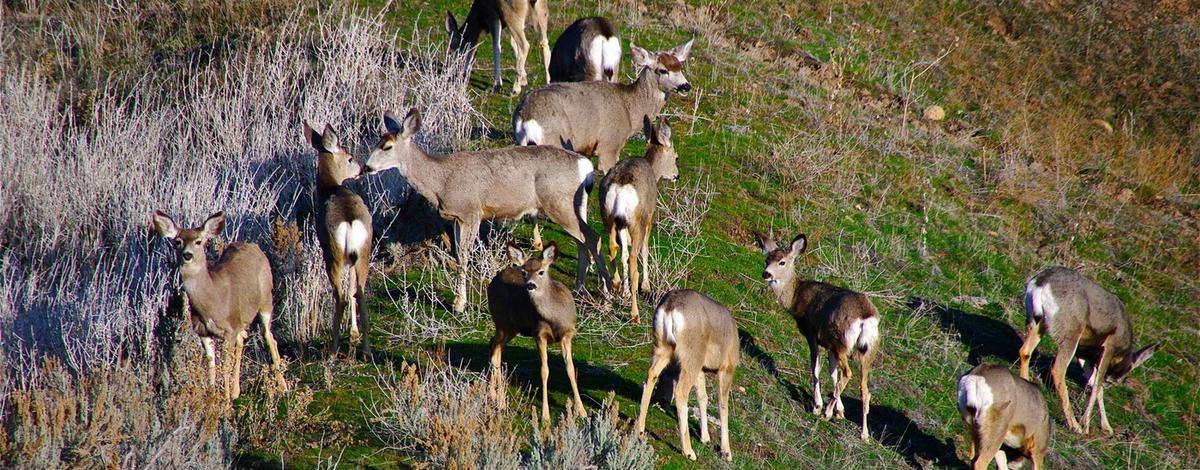People visiting the Boise River Wildlife Management Area in November may see low-flying aircraft spraying the areas burned last summer, which is to reduce or eliminate the spread of weeds.
To control invasive grasses, such as cheat grass, in areas burned by the Table Rock and Milepost 14 fires, Idaho Fish and Game has hired a professional applicator to aerial spray about 1,200 acres, mostly near U.S. 21 and Table Rock.
“Maintaining and restoring wildlife habitat on the WMA is one of the department’s highest priorities,” WMA manager Krista Biorn said. “One of the biggest obstacles is the presence or spread of invasive annual grasses such as downy brome, or cheatgrass.”
Spraying will be done by helicopter or airplane and will take about two days when conditions are favorable, which is ideally during overcast skies and prior to rain or snow. The applications will take place on areas of the WMA that are currently closed to public access due to the fire.
“This is where people shouldn’t be due to the closures, but we want to inform them about the spraying and let them know why applications are being conducted,” she said.
About 200 acres of Fish and Game property that burned in the Table Rock fire will be sprayed, and another 1,000 acres burned in the Milepost 14 fire will be sprayed.
The spraying is vital to recovery of the areas because native plant species recover slowly after a fire, but cheatgrass is adapted to respond quickly, Biorn said. Cheatgrass fill in any open space left by the fires and make the landscape more susceptible to future fires, and it will also outcompete native plants for open space and moisture.
“This in turn makes it extremely difficult for native vegetation to grow,” she said.
In order to minimize the infestation of cheatgrass over the long-term, Fish and Game will combine herbicide spraying with a soil amendment known as MB906, which is a naturally-occurring microorganism that attaches to the roots of the cheatgrass and inhibits its growth. The microorganism also reduces cheatgrass’ competitive advantage by reducing the number of seeds one plant can produce.
“This will allow the Fish and Game the opportunity to control cheatgrass over a longer period of time, focus more on re-establishing native vegetation, and hopefully minimize fires and the loss of wildlife habitat in the future,” Biorn said.


